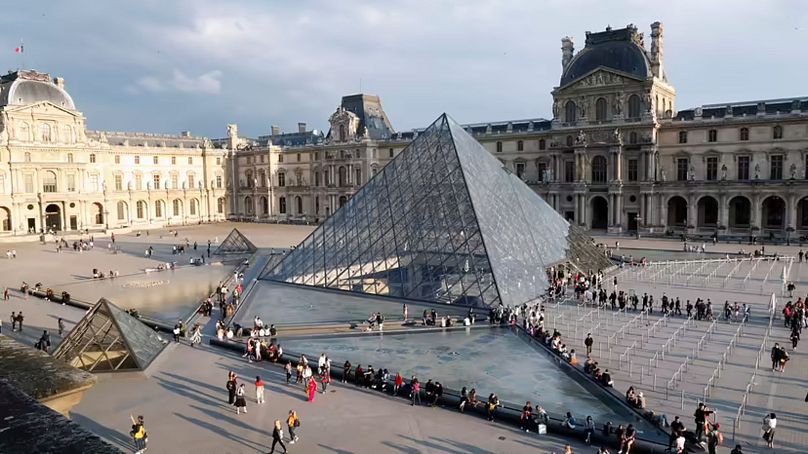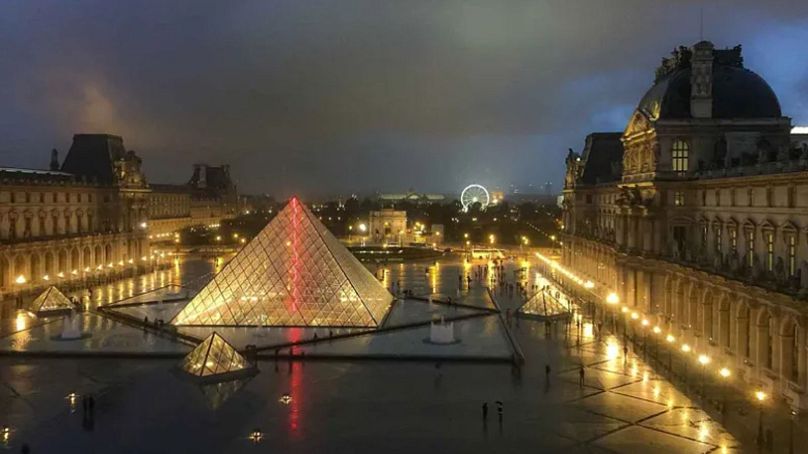On this day in 1793, the Louvre Museum opened in France. But what’s behind its infamous pyramid and does a darker symbol lurk?
The Louvre Museum opened on 10 August 1793 with a modest collection of 537 paintings, with most of the works being from the royal collection or confiscated church property.
In 1981, then-French President François Mitterrand proposed the Grand Louvre plan, which called for a huge renovation of the museum. Part of his plan was giving the Louvre’s central Cour Napoléon a revamp.
Enter: I.M. Pei, the famous Chinese-American architect and committed modernist, who was tasked with constructing the now famous 71-feet-tall glass pyramid central to the huge courtyard.
Constructing the Louvre Pyramid and the three accompanying pyramidions was part of the first phase of the Grand Louvre project. Inspired by the Pyramid of Giza, I. M. Pei designed the pyramid in a way where the visitors would enter the pyramid and descend into the spacious lobby and then make their way into the main Louvre buildings.
As for the fifth and final one, it is the inverted pyramid which can be viewed when using the Carrousel du Louvre entrance underground.
However, the story of the iconic structure was not smooth sailing...
Mitterrand's project encountered criticism, mostly due to its cost - over a billion euros. Also, his decision to entrust the project design to I. M. Pei was not well-received, as many worried that entrusting someone who was not well-versed with French culture just wouldn’t be appropriate for the Parisian landmark.
It sparked a media frenzy and there were campaigns against it, with most of the criticism aimed at the idea of placing contemporary architecture alongside the backdrop of classic French Renaissance style.
Still, the project carried on and the construction was completed in late 1987, and opened to the public on 14 October 1988. It was eventually met with great praise from the resistant Parisians and has become one of the most recognizable architectural icons in France.
One key factor to the pyramid’s impact is its transparency.
It was I.M. Pei’s vision to have total transparency in the pyramid glass. Considering the faint bluish or greenish tint that glass holds, the mission to create a crystal clear glass was a big challenge. French manufacturing company Saint-Gobain Glass was commissioned to develop a new glass for the project and the team worked tirelessly to invent the extra clear laminated glass, with high optical quality, for the 673 glass panes.
Saint-Gobain even created enough glass to build two additional pyramids just in case any glass piece ever fell apart!
And its in the numbers that a persistent rumour resides.
673 panes or no, many still believe that the pyramid counts 666 segments.
The rumour began in the 1980s after the official brochure cited the “number of the beast” twice. This led many to speculate that President Mitterrand had commissioned this specific tally, apparently as a esoteric symbol hiding in plain site. Some even speculated that Mitterrand was a free mason and was interested in the occult. It certainly didn’t help that the pyramid is often considered as a symbol of death in Egyptian culture.
Was the construction of the Pyramid therefore a herald of the times?
The myth gained further traction in 2003, when Dan Brown’s best selling novel 'The Da Vinci Code' was published. In the book, the protagonist claims that the pyramid was constructed using 666 panes of glass.
However, Pei's office has long denied this and said that Mitterrand never specified the number of panes.
So unless you’re feeling particularly bored one afternoon in Paris and have the patience to count each individual rhombus, best to let this piece of gossip die.
But do spare a thought for those poor window cleaners.
The museum used to hire mountaineers to scale the Pyramid and clean the glass. But this was not a long-term solution, and in the 1990s, the museum began using a crane and a cleaning machine. Then, in 2002, Advanced Robotic Vehicles, a Seattle-based company, created another robot that could be controlled using a remote. The robot, dubbed LL1, climbs the Pyramid using suction cups. It features a squeegee (which is a delightful word) and rotating brush to clean the glass.
However, when it comes to descaling the glass, the museum still relies on ropers... who could probably tell you whether how many precise glass panes in the central pyramid.













